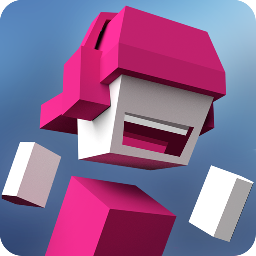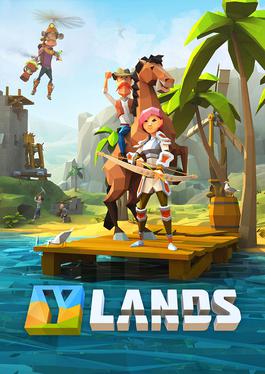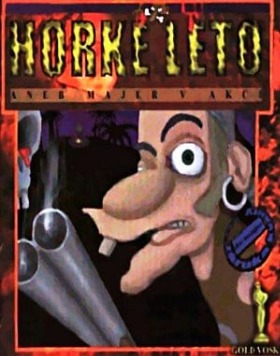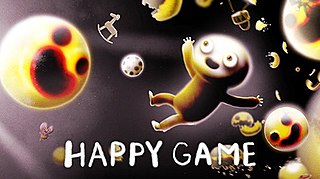
František Fuka is a Czech computer programmer and musician. He currently works as a film translator, preparing English-language movies for Czech release. He is known also as a film critic, publicist and commentator.

Samorost is a puzzle point-and-click adventure game developed by Amanita Design. The first game of the Samorost series was released in 2003 for free on the Amanita Design website. Two sequels were released, Samorost 2 in 2005 and Samorost 3 in 2016. The game was remastered and released on May 20, 2021, for Windows and macOS for free. iOS and Android ports were also made.

Machinarium is a puzzle point-and-click adventure game developed by Amanita Design. It was released on 16 October 2009 for Microsoft Windows, OS X, Linux, on 8 September 2011 for iPad 2 on the App Store, on 21 November 2011 for BlackBerry PlayBook, on 10 May 2012 for Android, on 6 September 2012 on PlayStation 3's PlayStation Network in Europe, on 9 October 2012 in North America and on 18 October 2012 in Asia, and was also released for PlayStation Vita on 26 March 2013 in North America, on 1 May 2013 in Europe and on 7 May 2013 in Asia. Demos for Windows, Mac and Linux were made available on 30 September 2009. A future release for the Wii's WiiWare service was cancelled as of November 2011 due to WiiWare's 40MB limit.

Samorost 2 is a puzzle point-and-click adventure game developed by Amanita Design. Released for Windows, OS X and Linux on 8 December 2005, the game is the second video game title in the Samorost series and the sequel to Samorost. On 5 November 2020, the game received an update with enhanced visuals, brought fullscreen support & replaced level codes with a level select system. This version also received iOS & Android ports.
Amanita Design is a Czech independent video game developing company founded in 2003 by Jakub Dvorský and headquartered in Prague, Czech Republic. The company has created award-winning games including Machinarium, the Samorost series and Botanicula, as well as educational and advertising minigames and animations, all using Adobe Flash. Clients include BBC, Nike and The Polyphonic Spree. Since Pilgrims (2019) and Creaks (2020), the company has been using Unity to develop its games. Amanita Design currently operates in several smaller teams, each developing a game of their own. One of them is the upcoming cardboard-built adventure Phonopolis.

Botanicula is a point-and-click adventure game developed by Amanita Design. The game was released on April 19, 2012, for Microsoft Windows, Mac OS X and Linux. The game was later ported to iOS and Android.

Jakub Dvorský is a designer and video game creator from Brno, Czech Republic. In 2003, he founded Amanita Design, a small independent game developing studio based in the Czech Republic.
The video game industry in the Czech Republic has produced numerous globally successful video games such as Operation Flashpoint: Cold War Crisis and the subsequent ArmA series, the Mafia series, Truck Simulator series, the Kingdom Come: Deliverance series, the Samorost series and others. There were 300–400 video game developers and around 30 video game companies focusing on video game development in 2014. In 2017 it was 1,100 developers and 47 companies. Video games are also considered by some experts to be the country's biggest cultural export. The video game industry did not enjoy a good reputation and was unsupported by the state until 2013, when the Ministry of Industry and Trade started to seek ways to kickstart the economy. By 2014, programs were planned to support the video game industry. Another problem is a lack of video game development specialization at any university.

Chameleon Run is a 2016 action game developed by Hyperbolic Magnetism and published by Noodlecake Studios. It was released for iOS, Android, Windows Phone, and Nintendo Switch.

DVA is a Czech alternative rock music duo consisting of the siblings Bára Kratochvílová and Jan Kratochvíl. DVA have described their style as "folk music of nonexistent nations", which consists of a mix of tango, cabaret, circus, pop, beatboxing, freak folk, and acoustic electro, among a variety of other eclectic styles. The lyrics of their songs are made up of nonsensical words that mix German, Hungarian, and Swedish, among others.

7 Mages is a 2016 video game developed by Napoleon Games. It is the third installment in Gates of Skeldal series. 7 Mages a tactical, turn-based game with that focuses on musical magic. Each character has a tune they can play to directly affect anyone within earshot.

Czech Game of the Year Awards are annual awards that recognize accomplishments in video game development in the Czech Republic. The awards began as part of Gameday Festival in 2010, but became independent from the festival in 2017. The awards are organised by the České Hry association.

Dark Train is a 2016 puzzle adventure game by Paperash Studio. It was released on 25 October 2016. Dark Train is described as an atmospheric adventure game with unconventional game mechanics. The game uses elements of steampunk and noir fiction mixed with fantasy elements.

Ylands is a 2019 adventure game developed by Bohemia Interactive.

Chuchel is a 2018 video game developed by Amanita Design.

Horké léto is a point-and-click video game. Developed by Czech studio Maxon, it was published in 1998 by JRC Interactive. A sequel, entitled Horké léto 2, was developed by Centauri Production and published in 1999 by JRC Interactive. A third game Žhavé léto 3 ½ is an action/adventure/driving game developed by Centauri Production and CINEMAX, published by Akella in 2006, which although unable to use the characters and titles of the first two games was related and rounded off what was effectively a trilogy. Žhavé léto 3 ½ was published in English, Spanish, French and German as Evil Days of Luckless John and in Russian as Сорвать Куш.

Creaks is a puzzle-platform game developed and published by Amanita Design. It was announced on 9 October 2018. The game was released on 10 July 2020 for iOS and macOS through Apple Arcade, followed by releases for Xbox One, PlayStation 4, Nintendo Switch, and Windows on 22 July 2020.

Tomáš Dvořák, known professionally as Floex, is a contemporary Czech composer, clarinetist, producer, DJ, and multimedia artist. He is best known for his work with indie game studio Amanita Design.

Pilgrims is a graphic adventure game developed and published by Amanita Design. The game was released for Windows, Linux, and iOS on 6 October 2019, and Nintendo Switch on 3 November 2022. Pilgrims was one of the first games distributed through Apple Arcade.

Happy Game is a point-and-click adventure game video game developed and published by Amanita Design. The game was first released on October 28, 2021 for Microsoft Windows and macOS via Steam and Nintendo Switch, and was later released for iOS and Android on Feb 2, 2023.


















